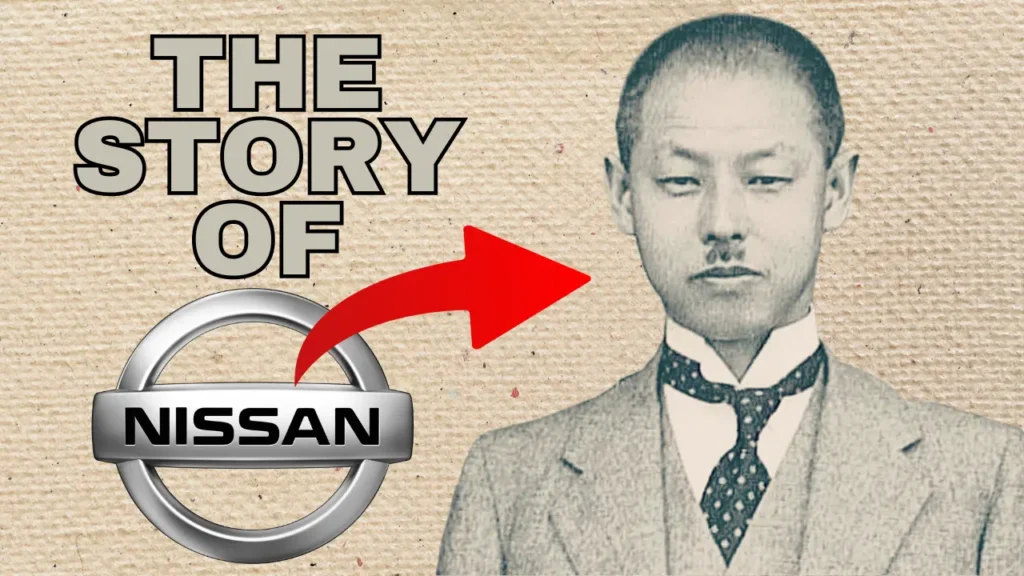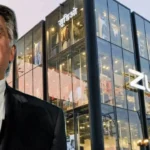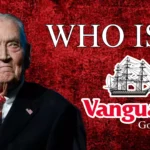Nissan’s journey from a modest automotive venture to a global powerhouse is a tale of ambition, innovation, and resilience. Founded amidst Japan’s industrial revolution, the company has navigated challenges, mergers, and market shifts while striving to earn consumers’ trust worldwide. This article delves into the rich history of Nissan, exploring its humble beginnings, pivotal moments, and relentless pursuit of excellence, making it a formidable competitor in the automotive industry. Join us as we unravel the story behind Nissan’s rise and its ongoing commitment to shaping the future of mobility.

Table of Contents
Nissan’s Rise to Prominence
Nissan undeniably enjoys significant praise and demand from multiple population segments. For a long time, the company has stood neck and neck with Toyota, fighting for the trust of the mass market. How did it get there? Let’s find out.
The Early Life of Masujiro Hashimoto
Masujiro Hashimoto was born in 1875, not long after the restoration of the Emperor of Japan to the throne. With a call for rapid industrialization, Japan sought to forcefully bring itself out of its medieval technological level and surpass the advanced industrialized nations of the West. Masujiro was born right then as a student interested in engineering. Not much is known about his early studenthood or family, but he graduated in mechanical engineering from the Tokyo Institute of Technology.
Hashimoto’s Career in Government and Engineering
From then on, he entered service as a government employee with the Ministry of Agriculture and Commerce. There, he was likely tasked with developing and managing tractors. The ministry sent him to the United States for further studies in engineering. He spent three years working for a steam engine manufacturer in New York. He also worked in electrical engineering, the production of machine guns, and the design of coal mining equipment.
Founding Kwaishinsha Motor Car Works
After moving back to Japan, Hashimoto had the fortune to look at the automobile. He seemed hooked, as gathering the necessary funds to establish his company didn’t take long. On July 1, 1911, in Tokyo’s Abazu Hiro neighbourhood, the Kwaishinsha Motor Car Works was established. The design of the first car was started right away. That car was known as the D.A.T. and was the earliest indigenously made Japanese car.
The Evolution of D.A.T. Motors
In D.A.T.8, D.A.T. company changed its name to Kashinsha Motorcar Company Limited and, in 1925, was renamed once more to D80 Jidosha and Company Limited, besides producing passenger cars like the D80 and Datsun, D.A.T. Motors D.A.T.o prodD.A.T.d trucks due to a nearly non-existent consumer market for passenger cars at the time. After the 1923 Great Kanto earthquake, disaster relief efforts led the company to produce many trucks. The first D.A.T. trucD.A.T.were was created for the military market in 1918.
The Birth of the Datsun
It took D.A.T. uD.A.T.l 1931 to reD.A.T.se a new, smaller car known as the Datsun Type 11. This was the first “Datsun,” meaning “son of DAD.A.T. due to its smalD.A.T. stature.
Formation of Nissan Motor Company
In 1928, the holding company Nihon Sangyo was founded by Yoshisuke Ikawa. The term “Nissan” first appeared in the 1930s as an acronym for “Nihon Sangyo” on the Tokyo Stock Exchange. At the time, Nissan owned foundries and auto parts companies. This business was a family-controlled zaibatsu. Ikawa didn’t start making cars until he bought D.A.T.T. Motors in 1933. D.A.T.ujiro Hashimoto thought it was wise to sell to such a strong organization. Thus, Nissan Motor Company was founded, taking over the existing technology and keeping the D.A.T. “D.A.T.” name for some mD.A.T.ls. Construction of its Yokohama plant was finished in 1935. This plant produced the first vehicle using an integrated assembly system in 1935.
Nissan’s Role During World War II
When hostilities between the Empire of Japan and the Republic of China were sparked, Nissan built trucks, planes, and engines for the Imperial Japanese Army. Nissan relocated its corporate headquarters to Xing King, the capital of the then-puppet state of Manchuria, in November 1937. In December, the company changed its name to Manchuria Heavy Industries Development Company (M.H.I.D.). This occurred because the Japanese military government began forcefully exerting control over many zaibatsu and other companies of the time, taking a page from the economics of the National Socialists in Germany. Indeed, the company would be forced to produce equipment for the armed forces of Imperial Japan until the end of World War II.
Post-War Recovery and the Nissan Union Crisis
The company could only resume building cars after the U.S. occupation of Japan rescinded the ban on automobile manufacturing in 1949. This decision was wise, as Nissan became a significant vehicle manufacturer for the U.S. Army during the war.
On the other hand, significant levels of anti-communist sentiment existed in Japan following the end of the Korean War. A powerful and militant union organized Nissan’s workforce, and the company had hhadncial issues. So, when it came time for wage negotiations, the company adopted a tough stance. Several hundred workers were fired as a result of the lockout. Shioji Ichiro served as one of the union’s leaders. He received a scholarship from the American government to attend Harvard University.
Ichiro proposed saving two thousand jobs in exchange for wage reductions. His suggestion was incorporated into a new labour agreement focusing on productivity. The company’s initial perceived defeat quickly turned into its greatest strength, paving the way for the quick development of cars with designs licensed by British automaker Austin. This helped the company stay afloat.
The Birth of the Nissan L Engine and 240Z
Nissan used the Austin patents to create more advanced versions of its contemporary engine designs than they could initially provide. Nissan’s new, highly advanced four-cylinder overheaO.H.C.am (O.H.C.) Nissan L engineO.H.C.hich wa, which is unmistakably a Nissan creation, was unveiled in 1967. Nissan gained respect in the global sedan market thanks to the new Datsun 510, powered by this engine. This was quickly followed up with the Nissan 240Z, a six-cylinder sports car with a striking design. The 240Z caused an instant sensation and propelled Nissan to the top of the automotive world.
The Merger with Prince Motor Company
Nissan and the Prince Motor Company merged in 1966, expanding Nissan’s line of upscale vehicles to include the Skyline and Gloria. The Nissan name soon replaced the Prince name on succeeding Skylines and Glorias. Nissan Prince Shop, a Nissan dealership in Japan, used the word “Prince.” Later generations of the Skyline would earn wide acclaim as one of the best sports cars ever.
Nissan’s Global Expansion and the Tuner Culture
Following the 1973 oil crisis, buyers began gravitating towards premium small economy cars worldwide, especially in the U.S.ative U.S. market. The comU.S. constructed new factories in Mexico, Australia, New Zealand, Taiwan, the United States, and South Africa to satisfy the rising demand for the latest Nissan Sunny. By the early 1980s, Nissan had long been Europe’s most popular Japanese brand. Nissan considered building a European plant to get around export tariffs and delivery fees to its customers there.
Nissan tried to turn the Greek plant into a single facility that produced vehicles for Europe. Ultimately, the company U.Kchosee U.K., specifically the U.K. city of Sunderland. They would go on to build quality sports cars such as the 300ZX, newer generations of the Skyline, the 240SX, and the Silvia. These cars would be well received as icons of the up-and-coming tuner car culture. Co-starring with its competitors Toyota and Mitsubishi, these were excellent cars, offering thrilling performance at affordable costs.
Nissan in the 21st Century: Expansion into Brazil and India
Nissan established a factory in Brazil to usher in the 21st century. Through its subsidiary Nissan Motor India Private Limited, Nissan expanded operations into India in 2005. The company invested 990 million dollars in Chennai to build a manufacturing facility that served the Indian market and as a hub for small car exports to Europe. Along with its global alliance partner Renault, Nissan had entered the 2000s as an ailing company that had to merge with the French automotive giant Renault to survive. This led to Renault executive Carlos Ghosn bC.E.O.ming its C.E.O. in 2001.
Carlos GhoC.E.O.and the Nissan RevivalC.E.O.an
Under C.E.O. Ghosn’s Nissan ReN.R.P. .O. Plan (N.R.P.), Nissan has recoveN.R.P. Many prominent economists consider this one of history’s most spectacular corporate turnarounds. Nissan has achieved record N.R.P.fits under the N.R.P., and its NissaN.R.P.nd Infiniti model lineups have been dramatically revitalized. Ghosn had received rapturous praise in Japan for the company’s turnaround amid a faltering Japanese economy. Japanese manga and popular culture frequently featured Ghosn and the Nissan turnaround. It got to the point where the Japanese government recognized his contributions to revitalizing Nissan and gave him the Japan Medal with Blue Ribbon in 2004.
During this time, Nissan would produce its most well-respected and beloved performance car yet: the Nissan GT-R.
The Fall of Carlos Ghosn and Nissan’s Decline
However, the good times were not to last. Ghosn announced in February 2017 that he would lose his position as C.E.O. of Nissan on April C.E.O.2017 but would continue to serve as the company’s chairmC.E.O. He was succeeded as C.E.O. by Hiroto Saikawa, the C.E.O.’s previous assistant. Following his arrest for allegedly under-reporting his income to Japanese financial authorities on November 19, 2018, Ghosn was ousted as chairman. Ghosn was detained for 108 days before being released on bail.
However, after 29 days, he returned to custody on fresh charges. Instead of holding his scheduled news conference, Ghosn’s attorneys released a video of him claiming that the 2018-19 Nissan scandal was independent proof of value destruction and corporate mismanagement on the part of Nissan.
The Carlos Ghosn Scandal and Its Aftermath
Facing near-certain imprisonment due to Japan’s extreme judicial system, Carlos Ghosn enlisted the help of a former U.S. special forces opeU.S.ve. He smuggled himself out of Japan in a cargo container to Lebanon, where he still holds a passport. He fiercely maintains his innocence and solid reputation from years of work at Renault, Michelin, and Autovez. Alongside shady particulars of the way large Japanese companies think and conduct business, he does admittedly have a solid case.
Anyway, he was out of Nissan for good. Of course, the entire scandal deeply hurt sales figures. Nissan announced at the end of July 2019 that it would fire twelve thousand five hundred workers over the following three years due to a ninety-five per cent decline in net income from the previous year. Then, C.E.O. Hiroto Saikawa confirmed that most layoffs would affect plant employees. Nissan later announced in May 2020 that it would reduce its production capacity by 20% due to the COVID-19 pandemic. The company announced that it would stop producing cars in South Korea, closed factories in Indonesia and Spain in the middle of 2020, and reported a 421 million loss.
Nissan’s Future: Electric Vehicles and Beyond
Under the leadership of Makoto Yoshida, Nissan has reorganized and focused on selling workhorse models such as the Leaf, Tiida, Micra, and Sunny. The company has also returned the Z nameplate for a spectacular new sports car. By 2030, Nissan claims it will have developed 23 new electric vehicles, 15 of which will be all-electric by the decade’s end. The company wants its Nissan and Infiniti brands to have a 50% electrification mix. Nissan intends to move more E.V.owly in the U.S. with an E.V. sales U.S. goal of E.V.st 40% by 2040.
The Rolls-Royce: Success, History, Case Study
Audi Success Story: Case Study of Audi and Future of Luxury Mobility
Mercedes-Benz: World’s First Car Success Story
Ford Sucess Story: The Incredible Rise of Henry Ford
Innovations in Electric Vehicle Technology
According to Nissan, its solid-state battery packs will lower the cost of battery packs to $75 per kE.V.swatt-hour by 2028, making E.V.s more accessible to the general public. To achieve future cost parity between electric and gasoline-powered vehicles, the company wants to reduce it to $65 per kilowatt. Nissan unveiled several E.V. concepts to demonstrate its commitment to an electric future, including the Surf-Out small pickup truck, the Hangout boxS.U.V.rossover, the Chill-Out small S.U.V., and the Max-Out coS.U.V.rtible sports car.
The Max-Out is the most athletic concept, emphasizing speed and performance with a low-slung stance to maximize driver and passenger comfort. Nissan claims it will include dynamic cornering and steering response balanced with minimal body roll. It is hoped that it will live up to the Nissan name’s reputation as a desirable brand in the future.
Nissan’s Uncertain Future
Nissan lives for now, but its future after all this turmoil remains to be guaranteed. Have you already heard the Nissan story? Are there any other details that you would add to this article? Please share it in the comments. And if you’d like to read more inspiring business stories, then make sure to check out our blog.










